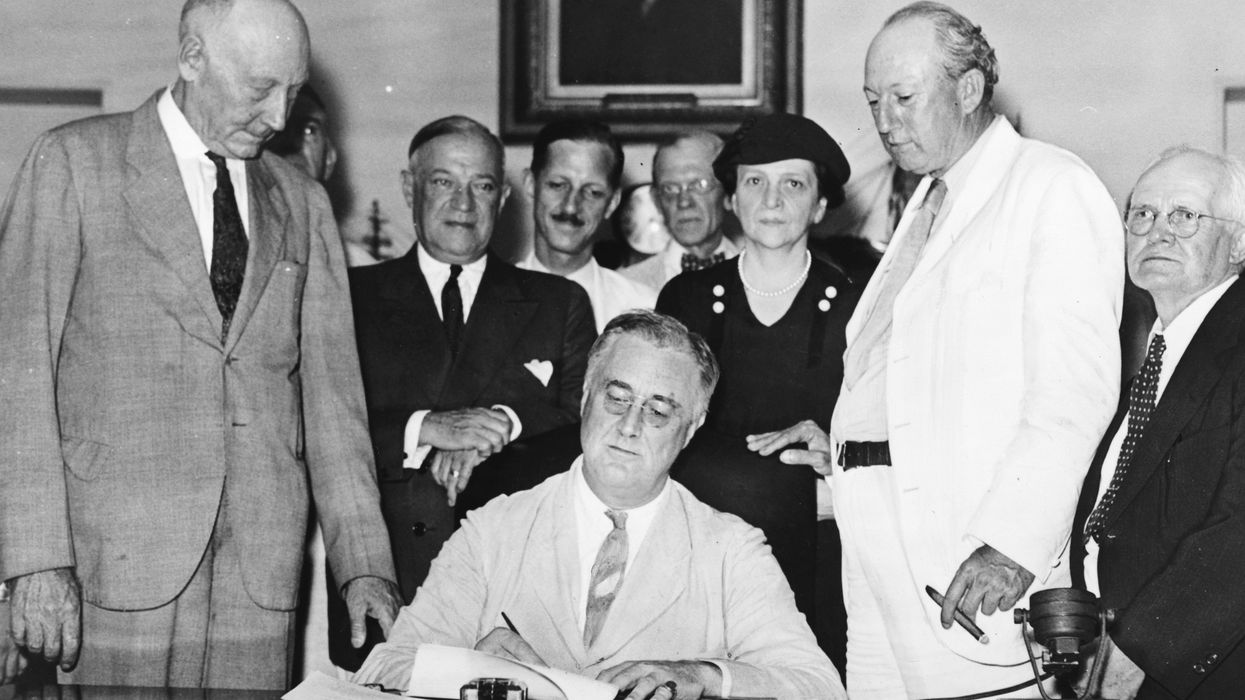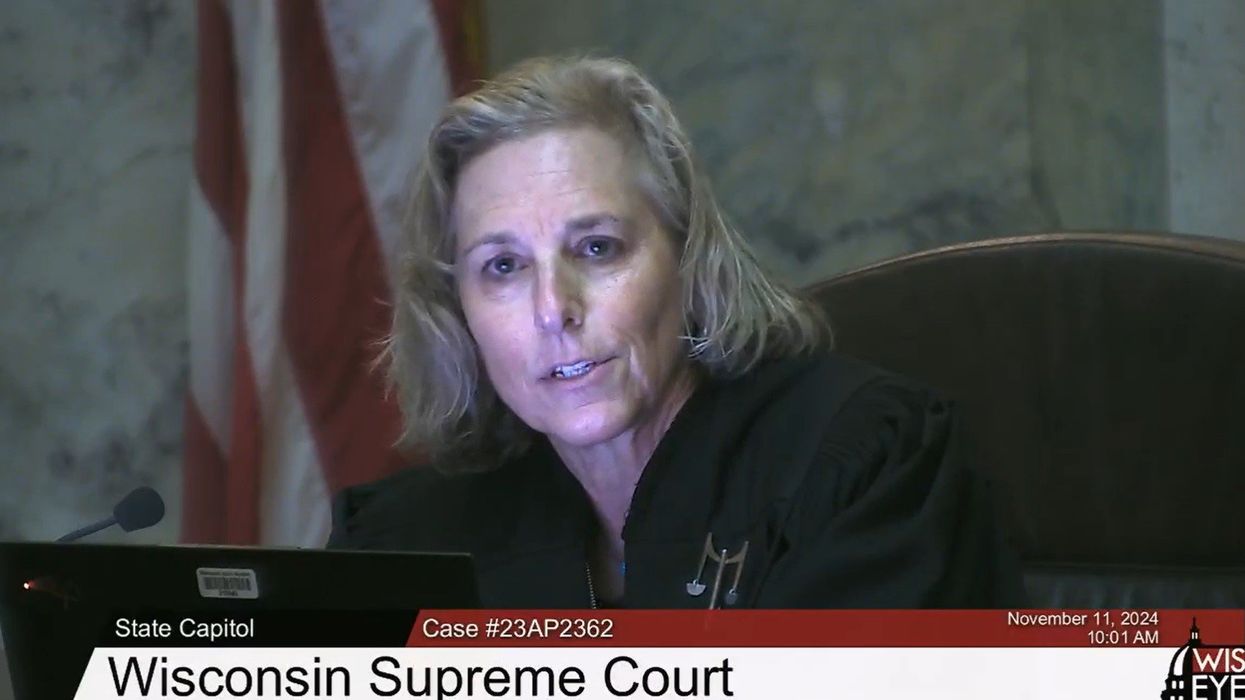Wisconsin Supreme Court justices question enforcing 1849 law as an abortion banJustice Jill Karofsky appeared immediately opposed to attorney Matthew Thome’s proposed interpretation Wisconsin’s 1849 law with regard to abortion.
(Screenshot via Wiseye)
November 12, 2024
Several of the Wisconsin Supreme Court liberal justices appeared opposed to the enforcement of a 174-year old law when it comes to abortion during oral arguments Monday in a high-profile case meant to clarify law in the state.
Wisconsin abortion law has been unsettled since the U.S. Supreme Court overturned Roe v. Wade in 2022, sending decisions about abortion legality back to states. Health care providers in Wisconsin immediately ceased providing abortion care due to the state’s 1849 law. Attorney General Josh Kaul and Democratic Gov. Tony Evers filed a lawsuit challenging the statute in June 2022, arguing that it had been superseded by other laws passed by the state, including a ban on abortions after 20 weeks enacted in 2015, and could not be enforced as applied to abortions.
Access ceased for 15 months until a Dane County judge ruled in December 2023 that the law applies to feticide, not abortion, allowing providers to resume services. Sheboygan District Attorney Joel Urmanski, a defendant in the case, appealed the decision to the Wisconsin Supreme Court, and Kaul also wanted a review of the decision from the Court. Milwaukee County DA John T. Chisholm and Dane County DA Ismael Ozanne are also defendants in the case, but both oppose enforcing the law.
The pre-Civil War Wisconsin statute states that any person “other than the mother, who intentionally destroys the life of an unborn child is guilty of a Class H felony” and that any person who “intentionally destroys the life of an unborn quick child” is guilty of a Class E felony. It specifies that “unborn child” is defined as “a human being from the time of conception until it is born alive. It includes no exceptions for rape or incest or specific medical complications. The only exception for the law is the life of a mother.
Urmanski’s attorney, Matthew Thome, defended the enforcement of the statute Monday morning, saying lawmakers never repealed it. Republican lawmakers have proposed updates to the 1849 law in the last two years, including a 14-week abortion ban, but the proposals have failed to become law.
“Policymakers have not repealed it. Indeed, they have expressly declined to do so at multiple opportunities and until they do, it can be enforced,” Thome said.
He argued that the question over whether Wisconsinites would be “better served” by a different law is not for the Court to decide.
Justice Jill Karofsky appeared immediately opposed to Thome’s proposed interpretation of the law.
“Just to be clear, a 12-year-old girl, who was sexually assaulted by her father, and as a result became pregnant under your interpretation [of the law], she would be forced to carry her pregnancy to term, correct?” Karofsky asked.
“Under the policy choice the Legislature made…, that would be correct,” Thome said.
“So in that case, a child would be forced to deliver a baby,” Karofsky said.
Karofsky pushed the point, asking about the consequences of a victim of sexual assault seeking an abortion under the law if it were enforceable.
“How about a woman who is a college freshman here at the University of Wisconsin-Madison? If she is sexually assaulted and it’s charged as a third degree sexual assault… that would be intercourse without consent. If she became pregnant, as a result of the sexual assault, it would be illegal for her to obtain an abortion?” Karofsky said.
“Correct, it would be illegal for a doctor to provide an abortion to her in the state of Wisconsin,” Thome said.
“If her assaulter is charged…, he would be facing a 10-year maximum imprisonment because that would be a Class G felony,” Karofsky said. “In that case, the penalty for aborting, after a sexual assault, would be more severe than the penalty for the sexual assault.”
A study published in the Journal of the American Medical Association estimates that since the Dobbs decision more than 64,000 pregnancies have been cause by rape in states with abortion bans.
“I fear what you are asking this Court to do is to sign the death warrants of women and children and pregnant people in this state because under your interpretation they could all be denied life-saving medical care while the medical professionals who are charged with taking care of them are forced to sit idly by,” Karofsky said. “This is the world gone mad.”
Justices also asked about the web of laws passed in the state, and appeared to disagree with Thome’s argument that the 1849 law completely negates them.
“We have statute after statute that you are somehow asking us to just absolutely ignore in your interpretation,” Justice Rebecca Dallet said. “We have a statute that talks about when an abortion can be performed and that’s after 20 weeks. We have a 24-hour waiting period. We have informed consent provisions. We have a ban on what they label to be partial birth abortion.”
Dallet asked Thome how he reconciles the 1849 statute with the later statute passed in 2015 that prohibits abortion after 20 weeks and the other laws related to abortion.
“I fit those things together… because that statute doesn’t say you can have an abortion,” Thome said.
Justice Brian Hagedorn appeared to agree that the 1849 law applies to abortion, and said later laws don’t negate it.
“It’s a matter of straight reasonable statutory interpretation,” Hagedorn said. “The law’s still there. It’s still there. The judiciary doesn’t get to edit laws. The judiciary doesn’t get to rewrite them. We didn’t delete it. We prevented its enforcement now, it’s still there.”
Wisconsin Assistant Attorney General Hannah Jurss, who represented Kaul, argued that there was an “implied repeal” of the 1849 law, when lawmakers passed other statutes regulating abortion access in the state.
“The standard implied repeal rule is it’s the earlier law that falls and there’s nothing in the text of the Wisconsin statutes… that would say disregard all of that, and instead in the event of Roe being overturned go back to 940.04, and we know state Legislatures knew how to do this because… a number of states enacted trigger bans,” Jurss said. “Wisconsin did not.”
Kaul said at a press conference following the arguments that the Legislature should take up some of the other laws related to abortion access in the state, no matter the outcome of the lawsuit.
“There are now relatively narrow majorities for Republicans in the state Legislature,” Kaul said. The Assembly is now a 54-45 Republican majority, while the Senate is an 18-15 Republican majority. “It is very clear that Wisconsinites overwhelmingly support having safe access to abortion in the state. For those legislators in these districts that are very moderate, where those districts could go either way, I think we ought to ask those folks, do they support some common sense changes that will protect access to abortion care in Wisconsin.”
The Wisconsin Supreme Court has also agreed to hear a second lawsuit brought by Planned Parenthood of Wisconsin against Urmanski, which asks the Court to find that the state Constitution’s right to equal protection grants a right to receive an abortion and a doctor’s right to provide one.
Wisconsin Examiner is part of States Newsroom, a nonprofit news network supported by grants and a coalition of donors as a 501c(3) public charity. Wisconsin Examiner maintains editorial independence. Contact Editor Ruth Conniff for questions: info@wisconsinexaminer.com. Follow Wisconsin Examiner on Facebook and X.












